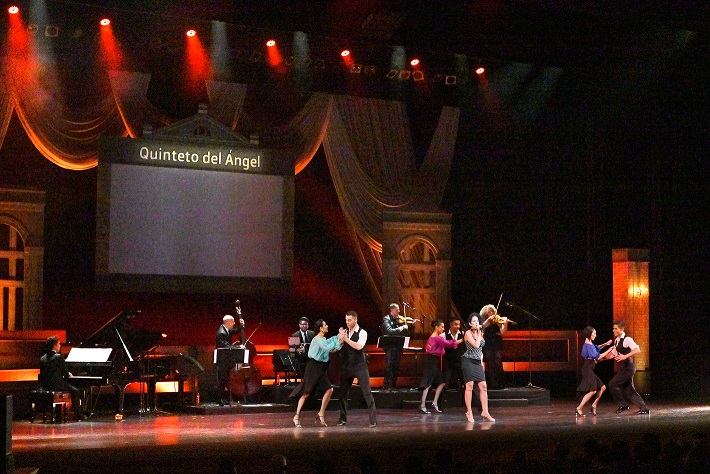The treasure of Argentina emerges from a melting pot of ethnicities
 H.E. Raul Dejean, Ambassador of the Argentine Republic
H.E. Raul Dejean, Ambassador of the Argentine RepublicMin-On: First, we wish to express our appreciation to your Excellency for your courteous cooperation and continuous support of Min-On’s activities since your arrival in Japan as the ambassador of Argentina.
Ambassador: As I am still new to Japan, I continue to learn more about the Min-On Concert Association and its activities. After hearing of the forty-one-year history of the Min-On Tango Series, I want to express my sincere appreciation for Min-On’s introducing our treasured culture of tango to the Japanese people. Actually, I am very surprised by the fact that many people in Japan are so enthusiastic about tango.
Min-On: The Argentine Tango has been recognized as part of the world’s cultural heritage by UNESCO in December 2009, and indeed, it’s very popular in many different countries all around the world. I want to ask you, as the ambassador from the home country of tango, how is tango viewed among the people in Argentina?
Ambassador: I am not an expert on tango, but I can say that tango resonates deeply with the people in Argentina. Tango emerged in the late 1800s among the working-class neighbor-hoods in Buenos Aires and in a part of Uruguay. It was not originated by any particular culture of a single country, but rather by the mixture of diverse cultures brought by immigrants from Spain, Italy, and most likely, Africa and other countries. So I can say that our treasure of Argentine Tango emerged from the melting pot of ethnicities. Although tango is now identified as our nation’s proud culture, at the beginning, people among the upper classes of society segregated tango as emotional music and dance from the working-class slums in the dark side of town. But eventually in the early 1900s, tango came to be accepted in the elegant salons of high society and, after being introduced in Broadway shows and popular movies in the 1980s, a worldwide tango boom started. It became popular even among younger generations in Argentina after the rise of a new style of tango such as the “electro tango” and “tango fusion.” Even now, tango has become a very important part of the economy and business in Argentina.
Min-On: Personally, what do you think about tango?
Ambassador: Even though I am not a good dancer, I love “salon-style tango.” For many people, the typical image of tango is the dramatic and dynamic dancing style on stage, known as “stage tango” or “show tango.” But I feel tango is rooted more in the daily lives of the common people. Tango for me is a way to embrace a partner, a way to speak to a loved one, or a way to share my emotion with a person.
Min-On: As ambassador, what do you think about promoting your native culture in Japan?
Ambassador: Developing a healthy diplomatic relationship and promoting business for a better trade balance are very important objectives of the embassy. At the same time, however, I strongly believe that exposing the people of Japan to the culture of Argentina will be beneficial in promoting business. For example, if people learn about our food culture, they will discover the excellent wine that we produce. This will result in the promotion of the wine business in Argentina. In that sense, promoting our culture is one of the most essential functions and my mission as an ambassador. We are very proud of our treasured culture of tango and deeply appreciate Min-On’s dedication to its promotion. I sincerely look forward to collaborating with Min-On on further cultural exchanges between our two countries.






